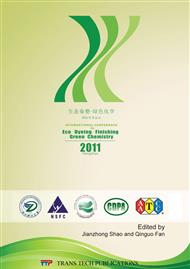p.568
p.573
p.578
p.584
p.589
p.593
p.598
p.603
p.608
Textile Wastewater Treatment Using Combined Process of Biological Wriggle Bed and Ozone Biological Aerated Filter
Abstract:
A combined process of biological wriggle bed and ozone biological aerated filter was utilized to treat textile wastewater. Results showed that COD removal efficiency was almost 90.4%. The average effluent COD was 85.87 mg/L. The effluent colority was 64-32 times. This study indicated that the combined process is potentially useful for treating textile wastewater.
Info:
Periodical:
Pages:
589-592
Citation:
Online since:
January 2012
Authors:
Keywords:
Price:
Сopyright:
© 2012 Trans Tech Publications Ltd. All Rights Reserved
Share:
Citation:


